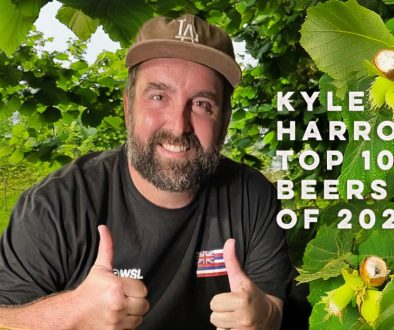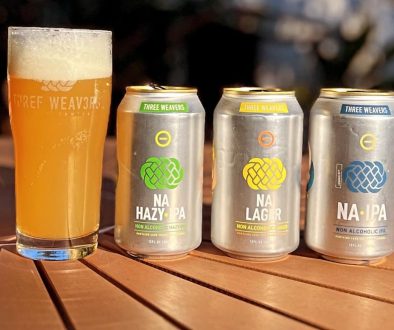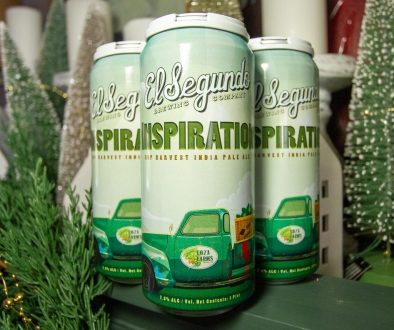Two Epic Weeks in Brew Zealand – Part I: The Beer Industry in NZ
 When most people think of New Zealand the epic landscapes come to mind – breathtaking fiords, picturesque bays, enchanting glaciers, dense forests, thermal wonders, and mythical beaches. When beer geeks think of New Zealand epic hops likely come to mind – Nelson Sauvin, Motueka, Riwaka, Pacifica, Hallertau and Pacific Jade. Sierra Nevada’s Southern Hemisphere Harvest Ale and Drake’s Aroma Prieta are excellent examples of US breweries using New Zealand hops to produce exceptionally delicious brews. In addition, New Zealand beer has started showing up on store shelves more prominently in my area (San Francisco), notably 8 Wired, Epic, and Moa. While I had limited exposure to New Zealand beer prior to embarking on my adventure, what I discovered was an emerging industry full of unique and interesting brewers, breweries, beer, hops, and consumers.
When most people think of New Zealand the epic landscapes come to mind – breathtaking fiords, picturesque bays, enchanting glaciers, dense forests, thermal wonders, and mythical beaches. When beer geeks think of New Zealand epic hops likely come to mind – Nelson Sauvin, Motueka, Riwaka, Pacifica, Hallertau and Pacific Jade. Sierra Nevada’s Southern Hemisphere Harvest Ale and Drake’s Aroma Prieta are excellent examples of US breweries using New Zealand hops to produce exceptionally delicious brews. In addition, New Zealand beer has started showing up on store shelves more prominently in my area (San Francisco), notably 8 Wired, Epic, and Moa. While I had limited exposure to New Zealand beer prior to embarking on my adventure, what I discovered was an emerging industry full of unique and interesting brewers, breweries, beer, hops, and consumers.
New Zealand is home to approximately 50 or so breweries producing a range in styles, with the most common style being lagers in the range of 4-5% ABV. According to market research performed by The Brewers Guild of New Zealand, craft brewing is a major trend with the number of small craft breweries (defined as less than 40,000 litres per annum) doubling from 15 to 30 over the 4 year period. The Brewers Guild of New Zealand also discovered there is an increasing trend to export beer. Of the breweries surveyed, 42% were exporting their beer and 32% had plans to begin exporting within the next 2 years. The results of the market research demonstrate the changing beer industry.
Ralph Bungard of Three Boys Brewery and President of The Brewers Guild of New Zealand sums up the beer industry in New Zealand best: “Certainly the increased number of small brewers and the volume of the beer that they are producing suggest that the public are changing their drinking habits. There is an explosion of beer flavours and styles available to consumers, and that means more of the public are finding a beer that suits their taste and lifestyle. It is very encouraging to see the growth and diversification in the industry and it is a good sign that most brewers consider that they will grow in size and look to be exporting in the next year. These are exciting times for brewers and consumers.”
What I experienced in New Zealand was consistent with Bungard’s statements – a diverse range of enthusiastic, eclectic breweries – from large scale operations like Lion (which includes Emerson Brewing Company and Speight’s) and DB Breweries (DB Draught Brewery, Tui Brewery and Monteith’s Brewing Company), to smaller microbreweries, nanobreweries and contract breweries (8 Wired, Epic Brewing Company, Moa Brewing Company, and Yeastie Boys, all of which are distributed in the U.S.). Each brewery offered a unique experience, from Wanaka Beer Works, where I was served by the brewer as he was making a batch of beer, to Monteith’s Brewery, a much larger scale operation, offering visitors the opportunity to tour the brewery, purchase memorabilia, and sample beer in a lovely new facility. Unfortunately some of the notable breweries did not have tasting rooms (Epic, 8 Wired, Yeastie Boys), however, bottles were easily found in supermarkets (Countdown, New World Market). Some of the breweries which did not have tasting rooms worked with neighboring bars to make their variety of beers available (such as the Dodson Street Bistro and Ale House which offers patrons a long list of Renaissance and 8 Wired beers).
I also noticed a range in how “craft beer” was defined. I imagine over the next few years New Zealand will further define beer standards. I searched for an organization, similar to the Brewers Association in the US, who’s mission is to “promote and protect small and independent American brewers, their craft beers and the community of brewing enthusiasts”. The closest organization I found was The Brewers Guild of New Zealand, who I anticipate the brewers will be looking to as the industry evolves.
As Bungard stated, the consumers are evolving, particularly as more options are becoming available with breweries like Garage Project and Yeastie Boys presenting consumers with new options. Over the next few years New Zealand may start to see an increase in the educated population of beer drinkers, aka an evolution of beer geeks, particularly in Wellington.
In summary, it was an exciting time to visit New Zealand and I am curious to see how the industry unfolds over the next few years. Will we start to see more New Zealand beer in the US? With exceptional breweries like 8 Wired, Epic, Garage Project and Yeastie Boys, hopefully. How will the styles of beers brewed by New Zealand brewers evolve? To what extent will those styles be influenced by American and European styles? How will the taxes on beer change and will this impact the ABV? With consumers becoming more educated, will we start to see new breweries and the availability of beer increase? I plan to return to New Zealand down the road, but in the meantime luckily I have access to 8 Wired and Epic, and Drake’s Aroma Prieta in July.
Over the next few days I will provide a detailed account of my journey, by area (North Island and South Island). Stay tuned for Part II: The North Island and Part III: The South Island (which will include local terminology).





